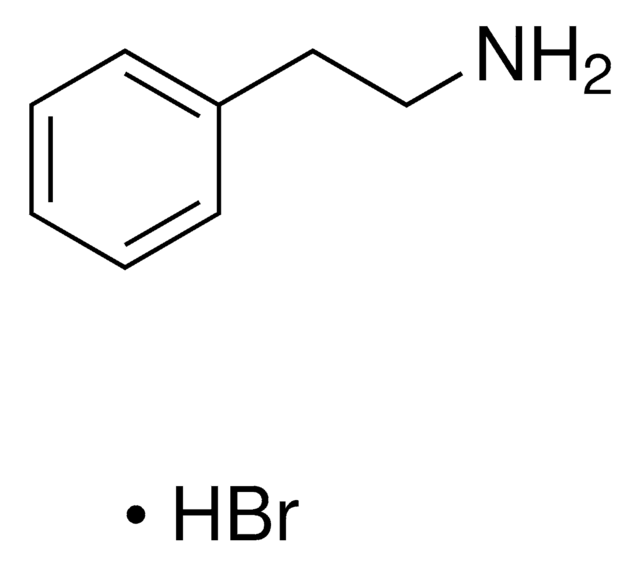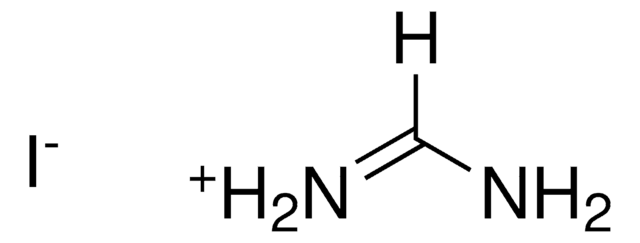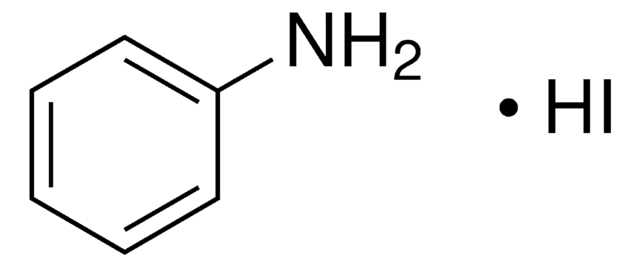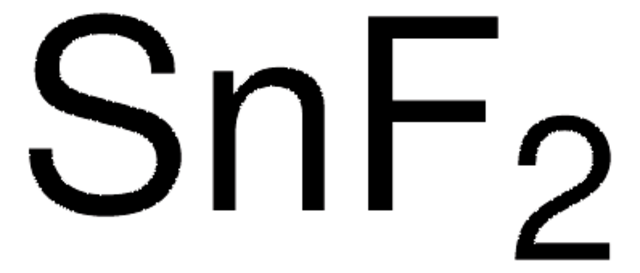805904
Phenethylammonium iodide
Sinónimos:
Greatcell Solar®, Phenethylamine hydriodide
About This Item
Productos recomendados
description
Elemental Analysis: ~38.5% C, ~5.6% N
Quality Level
assay
98%
form
powder
greener alternative product characteristics
Design for Energy Efficiency
Learn more about the Principles of Green Chemistry.
sustainability
Greener Alternative Product
mp
283 °C
greener alternative category
, Enabling
SMILES string
[H][N+]([H])([H])CCC1=CC=CC=C1.[I-]
InChI
1S/C8H11N.HI/c9-7-6-8-4-2-1-3-5-8;/h1-5H,6-7,9H2;1H
InChI key
UPHCENSIMPJEIS-UHFFFAOYSA-N
General description
Application
Legal Information
Greatcell Solar® is a registered trademark of Greatcell Solar Materials Pty Ltd
signalword
Warning
hcodes
Hazard Classifications
Acute Tox. 4 Oral - Eye Irrit. 2 - Skin Irrit. 2 - STOT SE 3
target_organs
Respiratory system
Storage Class
11 - Combustible Solids
wgk_germany
WGK 3
flash_point_f
Not applicable
flash_point_c
Not applicable
Elija entre una de las versiones más recientes:
Certificados de análisis (COA)
¿No ve la versión correcta?
Si necesita una versión concreta, puede buscar un certificado específico por el número de lote.
¿Ya tiene este producto?
Encuentre la documentación para los productos que ha comprado recientemente en la Biblioteca de documentos.
Artículos
Next generation solar cells have the potential to achieve conversion efficiencies beyond the Shockley-Queisser (S-Q) limit while also significantly lowering production costs.
For several decades, the need for an environmentally sustainable and commercially viable source of energy has driven extensive research aimed at achieving high efficiency power generation systems that can be manufactured at low cost.
Nuestro equipo de científicos tiene experiencia en todas las áreas de investigación: Ciencias de la vida, Ciencia de los materiales, Síntesis química, Cromatografía, Analítica y muchas otras.
Póngase en contacto con el Servicio técnico








